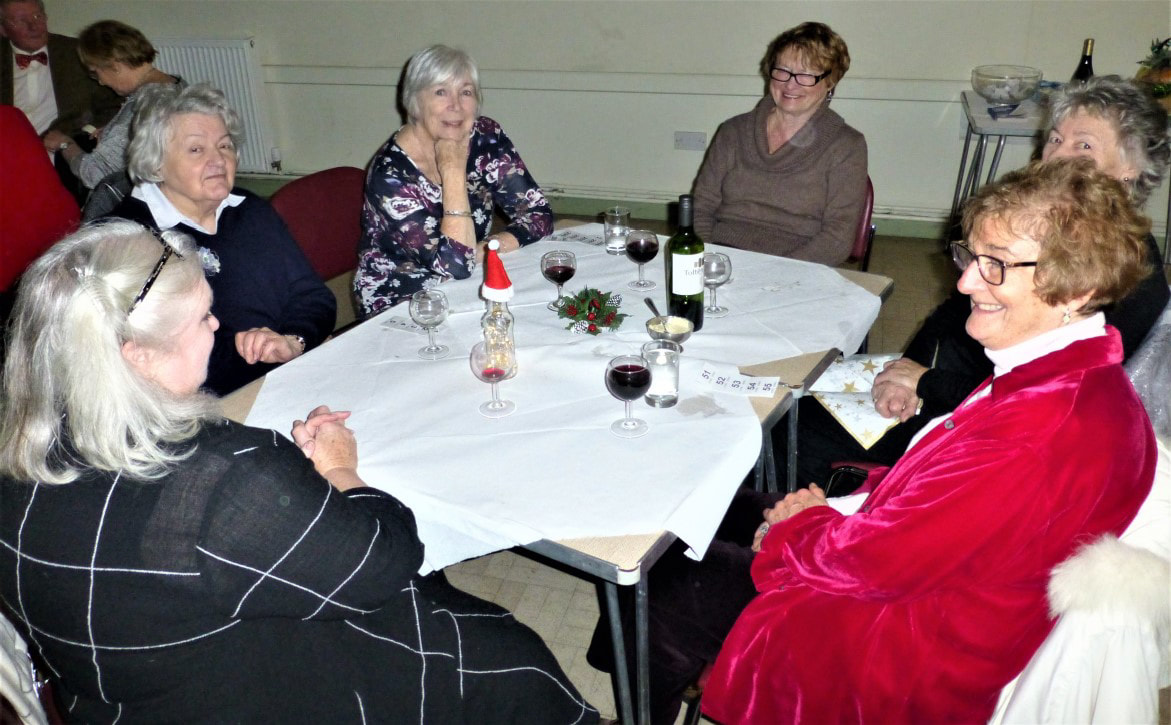|
Thirty Museum volunteers enjoyed an evening together on Saturday 14 December 2019 at what has become a regular pre-Christmas fixture in the Fairlynch calendar. The fish and chips supper was provided by Budleigh Fish Café and proved a popular choice, followed by mince pies and cream and a raffle! Cheers! Here’s to many more Fairlynch parties!
The 2020 end of season party for volunteers will be on Saturday 7 November 2020. How about joining us if you’re not already a volunteer?
0 Comments
Like many Budleigh residents of the past, the artist Cecil Elgee had an Anglo-Indian background and it was for this that her name will be known by those familiar with 'Costumes and Characters in the Days of the British Raj', the book which appeared just before her death. But her work as a painter and illustrator covered a wide range of subjects.
Born in 1904, Cecil Elgee, better known by her family nickname as Moppie or Mops, went out to India to join her parents in Bombay in 1922 when she was 18 and studied at the Bombay School of Art. On her return to England in 1927, the family settled in Budleigh Salterton and she continued her art studies at the Exeter Art School, founded in 1854 as part of the Royal Albert Memorial Museum. During World War 2 she served as a Naval VAD (Voluntary Aid Detachment) at the Royal Naval Hospital in Plymouth. She went through the Plymouth Blitz and at the end of the war she was one of the twelve Naval VADs in the Victory Parade in London. When demobilised she returned home to look after and subsequently nursed her elderly father and later her widowed sister. Working from her home at 9 Copplestone Road in Budleigh Salterton she proved to be a prolific and versatile artist. Her work was always in demand, especially when she portrayed animals - both family pets, and working animals. Cecil Elgee died in 1984 but her name lives on in the Cecil Elgee Memorial prize, awarded by the Budleigh Salterton Art Club. The latest acquisition is the fifth of her watercolour paintings in Fairlynch’s collection. This was recently confirmed by lace historian Brian Lemin of New South Wales, Australia. The 11½ cm long wooden bobbin is carved with the initials MR and the date 1662.
Fairlynch's curator of lace Sue Morgan says “It came into the museum's collection in the 1990s and its origin is unknown. However, style and decoration are typical of an East Devon trolly-lace bobbin made for a lace-maker with the initials MR in 1662.” Museum chairman Trevor Waddington commented “It was made just two years after the Restoration of King Charles II and four years before the Great Fire of London. If only these objects could talk!” |
fairlynch news & eventsArchives
April 2024
Categories
All
|
|
|
|
|
OPEN 29 March - 28 October 2024 | Tues - Sun + Bank Holiday Mondays, 2pm - 4.30pm
ADMISSION: £2.50 PER ADULT | CHILDREN UNDER 16 FREE | Free entry to Friends of Fairlynch
Unaccompanied children not admitted
ADMISSION: £2.50 PER ADULT | CHILDREN UNDER 16 FREE | Free entry to Friends of Fairlynch
Unaccompanied children not admitted
Budleigh Salterton Arts Centre and Museum (Fairlynch), 27 Fore Street, Budleigh Salterton, Devon EX9 6NP | 01395 442666 | Contact us
© Budleigh Salterton Arts Centre and Museum (Fairlynch Museum) 2020 All Rights Reserved | Registered Charity 306636 | Privacy & Cookies Policy | Website design by brightblueC












 RSS Feed
RSS Feed








